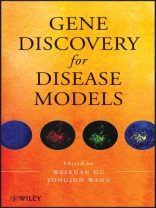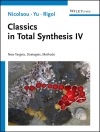This book provides readers with new paradigms on the mutation
discovery in the post-genome era. The completion of human and other
genome sequencing, along with other new technologies, such as
mutation analysis and microarray, has dramatically accelerated the
progress in positional cloning of genes from mutated models. In
2002, the Mouse Genome Sequencing Consortium stated that ’The
availability of an annotated mouse genome sequence now provides the
most efficient tool yet in the gene hunter’s toolkit. One can move
directly from genetic mapping to identification of candidate genes,
and the experimental process is reduced to PCR amplification and
sequencing of exons and other conserved elements in the candidate
interval. With this streamlined protocol, it is anticipated that
many decades-old mouse mutants will be understood precisely at the
DNA level in the near future.’ The implication of such a
statement should be similar to the identification of mutated genes
from human diseases and animal models, when genome sequencing is
completed for them. More than five years have passed, but genes in
many human diseases and animal models have not yet been identified.
In some cases, the identification of the mutated genes has been a
bottleneck, because the genetic mechanism holds the key to
understand the basis of the diseases. However, an integrative
strategy, which is a combination of genetic mapping, genome
resources, bioinformatics tools, and high throughput technologies,
has been developed and tested. The classic paradigm of positional
cloning has evolved with completely new concepts of genomic cloning
and protocols. This book describes new concepts of gene discovery
in the post-genome era and the use of streamlined protocols to
identify genes of interest. This book helps identify not only large
insertions/deletions but also single nucleotide mutations or
polymorphisms that regulate quantitative trait loci (QTL).
Innehållsförteckning
Preface.
Acknowledgments.
Contributors.
1. Gene Discovery: From Positional Cloning to Genomic Cloning
(Weikuan Gu and Daniel Goldowitz).
2. High-Throughput Gene Expression Analysis and the
Identification of Expression QTLs (Rudi Alberts and Klaus
Schughart).
3. DNA Methylation in the Pathogenesis of Autoimmunity
(Xueqing Xu, Ping Yang, Zhang Shu, Yun Bai, and Cong-Yi
Wang).
4. Cell-Based Analysis with Microfl uidic Chip (Wang
Qi and Zhao Long).
5. Missing Dimension: Protein Turnover Rate Measurement in
Gene Discovery (Gary Guishan Xiao).
6. Bioinformatics Tools for Gene Function Prediction
(Yan Cui).
7. Determination of Genomic Locations of Target Genetic Loci
(Bo Chang).
8. Mutation Discovery Using High-Throughput Mutation
Screening Technology (Kai Li, Hanlin Gao, Hong-Guang Xie,
Wanping Sun, and Jia Zhang).
9. Candidate Screening through Gene Expression Profile
(Michal Korostynski).
10. Candidate Screening through High-Density SNP Array
(Ching-Wan Lam and Kin-Chong Lau).
11. Gene Discovery by Direct Genome Sequencing (Kunal
Ray, Arijit Mukhopadhyay, and Mainak Sengupta).
12. Candidate Screening through Bioinformatics Tools
(Song Wu and Wei Zhao).
13. Using an Integrative Strategy to Identify Mutations
(Yan Jiao and Weikuan Gu).
14. Determination of the Function of a Mutation
(Bouchra Edderkaoui).
15. Confi rmation of a Mutation by Multiple Molecular
Approaches (Hector Martinez-Valdez and Blanca
Ortiz-Quintero).
16. Confi rmation of a Mutation by Micro RNA (Hongwei
Zheng and Yongjun Wang).
17. Confi rmation of Gene Function Using Translational
Approaches (Caroline J. Zeiss).
18. Confi rmation of Single Nucleotide Mutations
(Jochen Graw).
19. Initial Identifi cation and Confi rmation of a QTL Gene
(David C. Airey and Chun Li).
20. Gene Discovery of Crop Disease in the Postgenome Era
(Yulin Jia).
21. Impact of Genomewide Structural Variation on Gene
Discovery (Lisenka E.L.M. Vissers and Joris A.
Veltman).
22. Impact of Whole Genome Protein Analysis on Gene Discovery
of Disease Models (Sheng Zhang, Yong Yang, and Theodore W.
Thannhauser).
Index.
Om författaren
Weikuan Gu received his Ph D from Cornell University in 1994
and joined the University of Tennessee Health Science Center as an
assistant professor in 2002. Dr. Gu’s lab has developed an
integrated strategy for the positional cloning of genes, a strategy
which has been successfully applied to clone several genes from
spontaneous mouse mutations.
Yongjun Wang received his MD from Hebei Medical College
in 1982 and his MBA from Peking University in 2004. Dr. Wang joined
Beijing Tiantan Hospital in 2000 and now serves as the vice
president of the hospital.












